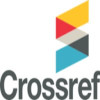Aim & Scope
International Journal of Sport, Exercise and Training Sciences (IJSETS) is a peer-reviewed online journal supported entirely by volunteer efforts. ISJETS is a respected interdisciplinary periodical offering the latest research in the science of sport, exercise and training sciences. IJSETS is to provide access to refereed articles that can have a contribution to assessment and evaluation practice the latest research in the sports sciences.
IJSETS publishes original papers, reviews, and research letters to the Editors. Manuscripts submitted to the journal must contain novel data on theoretical or experimental research or on practical applications in the field of sports sciences.
The topics may deal with every discipline of sports sciences. The comprehensive professional journal features articles and research notes encompassing such topic areas as:
ØExercise and Sports Training
ØAthletics Health
ØSports Nutrition
ØExercise and Sports Psychology
ØSports Information Technology
ØSports Management
ØPhysical Education and Sport
ØLeisure Studies and Recreation
The articles in the journal are open access to different users in different countries around the world.
Author Guidelines
Article templates should be used in the preparation of the manuscript.
Upper and lower information will be updated by us during the typesetting stage and should not be amended by authors.
Page Layout: A4 Vertical, Margins (Normal) (4 from the sides, 2,5cm)
Font Family: Times New Roman
Article Title: 14 Font size
Except for conjunctions first letters of every word should be capital, left aligned.
Oral statements are created from doctorate thesis or the studies that refer to them will be given as * footnote. There should be a space after the heading and a footnote should be given.
Author(s): 11 Font size, Author name and surname (only the initial letter are uppercase), Footnote is given after a space and as 1 – 2 ..., left aligned.
Abstract Title: 14 Font size and bold, left aligned.
Abstract Text: 9 Font size, Justify Aligned, No more than 250 words.
Keywords Title: 10 Font size and bold
Keywords: 9 Font size, 6 keywords maximum (different from the words that have already used in the Title of the manuscript)
Article Info: To be conducted by us after acceptation.
CrossMark and DOI: To be conducted by us after acceptation.
Subtitles: Introduction, Method, Discussion etc. 11 Font size, Bold and left aligned, 6nk space between paragraphs
Sub subtitles: 11 font size, bold, italic, left aligned.
Paragraphs: 11 font size, justify aligned, 6nk space between paragraphs
“GUIDELINES ON STYLE FOR SCIENTIFIC WRITING / William G Hopkins” (http://www.sportsci.org/jour/9901/wghstyle.html) and below mentioned examples for Table designs should be considered during the preparation of Tables and Figures.
Tables and Figures
Tables
Heading and text characteristics of tables and diagrams should be in accordance with samples in the Template
12nk space before and after tables and diagrams
Table headings and text is 10 font size
Table and numbers are bold ie. Table 1.
Headings and internal texts of the diagram are 10 font sizes if they are figures and in an amendable format.
Figures
Diagrams and numbers are bold ie. Figure 1.
If figures include a picture or a visual that are non-editable then it should be transferred to Word with 300DPI resolution, and original figure should be installed by Send Article step and Add Additional File option in step 4.
Abbreviations used in the Tables and Figures should be explained below them in “alphabetical order”.
EXAMPLE FOR A TABLE DESIGN 1 (Independent Group) | ||||||
Table x. …………………………………………………………………………… | ||||||
| Group 1 (N = …) (Mean ± SD) | Group 2 (N = …) (Mean ± SD) | Δ (%) (Mean ± SD) | Δ (%) (95% CI) | p | ES |
Age (year) | ……. | ……. | ……. | …… | …… | …… |
Height (m) | ……. | ……. | ……. | …… | …… | …… |
Mass (kg) | ……. | ……. | ……. | …… | …… | …… |
Dependent Variable 1 | ……. | ……. | ……. | …… | …… | …… |
Dependent Variable 2 | ……. | ……. | ……. | …… | …… | …… |
Dependent Variable 3 | ……. | ……. | ……. | …… | …… | …… |
… | ……. | ……. | ……. | …… | …… | …… |
Δ: difference, CI: confidence interval, ES: effect size (Cohen’s d), N: sample size, SD: standard deviation
EXAMPLE FOR A TABLE DESIGN 2 (Dependent Group / Repeated Measures)
Table y. ………………………………………………………………………… | ||||||
| Pre-test (Mean ± SD) | Post-test (Mean ± SD) | Δ (%) (Mean ± SD) | Δ (%) (95% CI) | p | ES |
Variable 1 | 8.12 ± 1.21 | 9,12 ± 1.21 | 11.1 ± 3.78 | 8.11 – 14.1 | …… | ……. |
Variable 2 | ……. | ……. | ……. | …… | …… | …… |
Variable 3 | M7.65 [5.11-10,1] | M9.25 [6.11-13.2] | M9.25 [6.11-13.2] | 7.11 – 9.87 | …… | r0.45 |
… | ……. | ……. | ……. | …… | …… | …… |
… | ……. | ……. | ……. | …… | …… | …… |
Δ = (Post-test – Pre-test)/(Pre-test) × 100, CI: confidence interval, ES: effect size (Cohen’s d), M Median [25% - 75%] (percentiles), r effect size for non-parametric test, SD: standard deviation
EXAMPLE FOR A TABLE DESIGN | |||||||||
Table 1. Physical characteristics of the participants in A group (n=27) and B group (n=27) | |||||||||
| Group | Mean | SD | Min | Max | ∆ (Mean ± SD) | 95% CI of ∆ | p | ES |
|
|
|
|
|
|
|
|
|
|
1Age (y) | A | 32.9 | 2.3 | 19.1 | 27.0 | ……… | ………. | 0.90 | −0.04 |
B | 33.0 | 3.0 | 18.8 | 32.2 | |||||
2Resistance Training Age (y) | A | 4.6 | 1.7 | 2.0 | 9.0 | ………. | ……….. | 0.32 | 0.35 |
B | 3.9 | 2.3 | 2.0 | 10.0 | |||||
Body Height (m) | A | 1.80 | 0.08 | 1.70 | 1.98 | ………… | ……….. | 0.43 | −0.28 |
B | 1.83 | 0.06 | 1.73 | 1.95 | |||||
Body Mass (kg) | A | 79.2 | 8.1 | 67.0 | 93.0 | ………. | ……… | 0.89 | 0.05 |
B | 78.8 | 10.1 | 59.1 | 102.0 | |||||
1Time passed from birth date to the testing date; 2Time passed since the first participation in complementary resistance training for the specific sport branch; ∆: Difference = A – B; CI: Confidence Interval; ES: effect size (Cohen’s d); max: maximum; min: minimum; SD: standard deviation; y: year | |||||||||
The text should comprise of the following sub-titles:
1) Title and Title Page
2) Abstract
3) Introduction
4) Method
5) Results
6) Discussion
7) Conclusion
8) Practical Applications
9) References
This page should include the titles of the manuscript, keywords and running titles. In Turkish manuscripts, the title in English should also take place. Likely, Turkish title should be mentioned for articles in the foreign language. If the content of the paper has been previously presented or its abstract has been published, an explanation should be made in this page about this issue. If there are any grants and other financial support by any institutions or firms for the study, information must be provided by the authors.
Author Information
The name and the surname of the authors should be written without abbreviation. The academic titles, the affiliations and the addresses of these affiliations should be clearly declared. Furthermore, the contact information of the corresponding author should be entered to the system. Since e-mail will be used primarily for the contact with the authors, the e-mail of the corresponding author should be indicated. In addition, the phone and the fax numbers should be also indicated.
ABSTRACT should include no more than 250 words in English and should include the following titles: Aim, Materials and Methods, Results, Conclusion
A. What is the research problem and research question that led to the conduction of this study?
B. What is the deficiency/insufficiency in the literature that led to the conduction of this study? The rational justification of this study should be conveyed to readers with appropriate literature knowledge.
C. What is the aim of the study?
D. What are the hypotheses of the study? (What would the authors expect to find out at the end of the study?)
A. Research design and research type should be explained briefly (qualitative, quantitative, mixed, observational, experimental, descriptive, analytic, causative, cross-sectional, longitudinal, tendency, retrospective, prospective, cohort, randomized controlled parallel design, non-randomized controlled parallel design, crossover controlled, external control, no control, repeated measures, reliability, validity, review, meta-analysis etc.)
B. Participants:
a) Voluntary participation should be expressed.
b) Ethic commission report should be expressed [Ethic commission report number should be indicated.].
c) Basic descriptive statistics related to participants should be reported.
d) In the case of trained participants, descriptive statistics related to general training age, sport branch specific training age, weekly training volume, training frequency, training type should be reported.
C. In the case of use of standard testing (measurement) methods, a reference in which testing (measurement) method is explained in detail should be cited.
D. Trademark, model, year and country information of testing devices should be reported.
E. Timezone over which the testing took place should be reported (e.g. 14:00-17:00).
F. Authors should beware of statements that disclose the author’s identity or author’s institute (Following similar expressions should be preferred: Performance laboratory of local university, a commercial fitness center in the city, ethics commission of local university, private education institution in the city, public schools in four different states etc.).
G. STATISTICAL ANALYSIS section should include the following:
a) Statistical Analysis should be located in the Methods section as a sub-heading.
b) Names of the statistical tests should be consistent with the literature. Justification for parametric and/or non-parametric statistical test choice, post-hoc test choice should be explained appropriately (assumptions of normal distribution, homogeneous variance, unequal sample size etc.).
c) Statistical significance level (p ≤ 0.05; p ≤ 0.01; p ≤ 0.001 or another p value) should be reported.
A. Studies including statistical difference analyses (within-subject [repeated measures] or between-subject) should include the following results related to the absolute difference or relative (%) difference:
a) Appropriate descriptive statistics (mean, standard deviation, median, minimum, maximum, percentiles etc.) of the difference,
b) The confidence interval of the difference,
c) p value of the difference,
d) The effect size of the difference.
Below mentioned references could be used for reporting effect sizes:
· Effect size, confidence interval and statistical significance a practical guide for biologists (http://www.ncbi.nlm.nih.gov/pubmed/17944619)
· The other half of the story: Effect size analysis in quantitative research (http://www.lifescied.org/content/12/3/345.full)
B. “Reporting Statistics in Psychology” (http://evc-cit.info/psych018/Reporting_Statistics.pdf) should be considered in the reporting of results and numerical values (Note: Values between –1 and 1 such as p, r, R, R2 should include the integer “0”. e.g. not p = .038, but p = 0.038; not r = .652, but r = 0.652).
C. “GUIDELINES ON STYLE FOR SCIENTIFIC WRITING / William G Hopkins” (http://www.sportsci.org/jour/9901/wghstyle.html) should be considered in preparation of the manuscript unless otherwise is indicated in the SCIENTIFIC WRITING RULES of IJSETS.
D. Results should not be repeated in Tables, Figures and body of the manuscript.
E. Interpretations should be avoided and obtained results should be reported in clear and simple terms (http://evc-cit.info/psych018/Reporting_Statistics.pdf).
F. Units should be reported according to “The International System of Units” (http://physics.nist.gov/Pubs/SP330/sp330.pdf).
G. Multiplication (×) and negative/minus sign (−) should be added via symbol tabs of Microsoft Office Word where necessary. Letter “x” or symbol hypen (-) should not be used to represent “×” or “−”.
H. Space should be used before and after symbols of <, ≤, >, ≥, ±, ×. No space should be used before and after division (/) symbol. No space should be used after “%”, “(” and “−”. No space should be used before “)”.
Results in the literature related to the study topic should not be reported without “INTERPRETATION”.
A. What is the originality/novelty of this study? In which way it satisfies a need in the literature? (Briefly)
B. What is/are the main finding(s) of the study (without repeating the numerical findings)?
C. What was/were your hypotheses? What have you found? Are your hypotheses consistent with your findings?
D. What did similar studies in the literature find? Are these findings consistent with yours?
E. How do you explain these (in)consistencies? What may be the reasons of these (in)consistencies?
F. What are the limitations of your study?
A. Numerical findings should not be repeated.
B. Conclusion derived just from “the findings of your study” should be reported.
A. Practical applications depending on the conclusion of the study for the practitioner in the related field (trainer, athlete, conditioning expert, mentor, psychologist, organizer, teacher, etc.) or for the researchers (in plain and clear language).
A. Accuracy of reference data is the author's responsibility. References should be numbered according to the consecutive citation in the text. References should be indicated by parenthesis in the text. If there is Turkish Reference, attention should be paid to indicate this. Journal titles should be abbreviated according to the style used in the Index Medicus.
B. Updated scientific references directly related to the study topic.
APA Style Guide: About APA
American Psychological Association rules for formatting papers, in-text citations, and end references. Examples based on the sixth edition of the Publication Manual from the APA.
References should be prepared based on APA 6 reference displaying essences. Font is Times New Roman and space between lines should be 3nk. Indent should be under letter 4. Reference types not stated in the SCIENTIFIC WRITING RULES OF IJSETS should be reported according to http://www.apastyle.org/.
9.1. REFERENCES SAMPLES
Journal Article
Material Type | In-text Citation | Reference |
|
| A Digital Object Identifier (DOI) is a way to keep track of content in a digital environment. Many periodical articles are assigning a DOI to each article in an issue. The DOI is unique and can be used by the reader to locate more citation information about the article. When a DOI is assigned, use it in place of other locating material (URL or database name). |
Article from a print journal (no DOI) | (Marshall & Clark, 2010). | Marshall, M. & Clark, A. M. (2010). Is clarity essential to good teaching? Teaching Philosophy, 33(3), 271-289. Notice that periodical titles are capitalized like the standard title capitalization where all major words in the title are capitalized, Title of Periodical. |
Article from a print journal (with DOI) | (Chaffee & Weston, 2010). | Chaffee, B. W. & Weston, S. J. (2010). Association between chronic periodontal disease and obesity: A systematic review and meta-analysis. Journal of Periodontology, 81(12), 1708-1724. doi: 10.1902/jop.2010.100321 |
Article from a journal in a database (no DOI) | (Badke, 2009). | Badke, W. (2009). How we failed the net generation. Online, 33(4), 47-49. |
Article from database or Internet (with DOI) | 1st citation Subsequent citations (Whitlock et al., 2009). | Whitlock, J., Eells, G., Cummings, N., & Purington, A. (2009). Nonsuicidal self-injury in college populations: Mental health provider assessment of prevalence and need. Journal of College Student Psychotherapy, 23(3), 172-183. doi: 10.1080/87568220902794366 |
Article from the Internet (available to anyone, no DOI assigned) | 1st citation (Negi, Bender, Furman, Fowler, & Prickett, 2010). Subsequent citations (Negi et al., 2010). | Negi, N. J., Bender, K. A., Furman, R., Fowler, D. N., & Prickett, J. C. (2010). Enhancing self-awareness: A practical strategy to train culturally responsive social work students. Advances in Social Work, 11(2), 223-234. Retrieved from http://journals.iupui.edu/index.php/advancesinsocialwork/article/view/482/1787 |
Books with Editor(s)
Material Type | In-text Citation | Reference |
Book with editor(s) and author(s) | (Martin, 1978) | Martin, E. W. (1978). The theory of care. In A. Ruskin et al. (Ed.), Hazards of primary care in aging populations (2nd ed.). Philadelphia, PA: J.B. Lippincott. Editors are necessary when citing a chapter from an edited book with individual authors for each chapter, commonly referred to as anthologies. |
Book with editor(s) and no author | (Leonard & Crawford, 2002) | Leonard W. R. & Crawford M. H. (Eds.). (2002). Human biology of pastoral populations. Cambridge, NY: Cambridge University Press. Editors and translators are required if no primary author can be determined. |
Entry in a reference work, with an editor and no author | ("Relativity," 2005). | Relativity. (2005). In B. Schulyer (Ed.), Psychological terms and meanings (2nd ed., Vol. 35, pp. 235-238). London, England: Bookies. |
Book with No Author
Material Type | In-text Citation | Reference |
Book with no author, no editor | ("The Theory of Care," 1978). Titles of an article, chapter, or web page should be placed in double quotation marks. Titles of a periodical, book, report, or brochure should be italicized. | The theory of care. (1978). Hazards of primary care in aging populations (2nd ed.). Philadelphia, PA: J.B. Lippincott. Place the title of the chapter or dictionary/encyclopaedia entry in the author spot when there is no author. |
Book with editor(s) and no author (referencing the entire book) | (Leonard & Crawford, 2002) | Leonard W. R. & Crawford M. H. (Eds.). (2002). Human biology of pastoral populations. Cambridge, NY: Cambridge University Press. |
Book with an editor(s) and no author (referencing a portion of the book) | ("Relativity," 2005). | Relativity. (2005). In B. Schulyer (Ed.), Psychological terms and meanings (2nd ed., Vol. 35, pp. 235-238). London, England: Bookies. |
Book with Anonymous listed as the author | (Anonymous, 2005). | Anonymous. (2005). Go ask Alice. New York, NY: Simon Pulse. |
Books with Organization as Author
Material Type | In-text Citation | Reference |
Book with organization as author | 1st citation (National Fire Protection Association [NFPA], 2009). Subsequent citations (NFPA, 2009). | National Fire Protection Association. (2009). Fundamentals of firefighting skills (2nd ed.). Sudbury, MA: Jones and Bartlett. Type out the full organization name for the reference list. |
Book with the same organization as author and publisher | 1st citation (American Psychological Association [APA], 2009). Subsequent citations (APA, 2009). | American Psychological Association. (2009). Publication manual of the American psychological association (6th ed.). Washington, DC: Author. When the same organization is listed as the author and the publisher, place the word, Author, in place of the publisher name. |
Book with Personal Author(s)
Material Type | In-text Citation | Reference |
Book with 1 author | (MacDonald, 2007). | MacDonald, R.G. (2007). Biochemistry. New York, NY: McGraw Hill. |
Book with 2 authors | (McKee & McKee, 2009). | McKee, T. & McKee, J.R. (2009). Business ethics: The moral basis of commerce (4th ed.). New York, NY: Oxford University Press. |
Book with 3-5 authors | First citation: (James, Cameron, Smith, Hawthorne, Cushing, 2005). Subsequent citations: (James, et al., 2005) | James, C., Cameron, P. D., Smith, Y. N., Hawthorne, H., & Cushing, S., M. (2005). The sociological theory of people and places. New York, NY: Oxford University Press. |
Book with 6 or more authors | (Bowsher et al., 2008). | Bowsher, C., Steer, M., Tobin, A, Cornelius, D. P., Rayburn, M., & Mantauk, B. B. (2008). Plant biochemistry. New York, NY: Garland Science. |
Book with 8 or more authors | (Ford et al., 2009). | Ford, M. N., Fielding, D., Reed, P. L., Harmon, M., Ulrich, B. T., Wheeler, K., Peel, J. (2009). Who constructs the mind? Deland, FL: Coleman Books. |
Electronic book (Internet, available to everyone) | (Gossett, 1963) | Gossett, T.F. (1963). Race: The history of an idea in America. Retrieved from |
Electronic book (Login required) | (Sanchez, Kopp, & Sanzari, 2010) | Sanchez, N., Kopp, C., & Sanzari, F. (2010). Destined for failure: American prosperity in the age of bailouts [NetLibrary version]. Retrieved from http://www.netlibrary.com/ |
Electronic book (Read on an eReader device i.e. Nook, Kindle, etc.) | (Austen, 2006). | Austen, J. (2006). Sense and sensibility [Kindle Reader version]. Retrieved from www.amazon.com |
Chapters and Parts of Books
Material Type | In-text Citation | Reference |
Chapter from book with a single author | (Clason, 2008). | Clason, G. S. (2008). The tale of seven remedies for a lean purse. The richest man in Babylon (pp. 23-25). Charleston, SC:BN Publishing. "The tale of seven remedies for a lean purse" is the chapter title. APA style uses p. for a one page item and pp. for multiple pages. |
Chapter from an edited book with different authors for each chapter (anthology) | (Berry, 2005).
| Berry, W. (2005). War does not maintain peace or promote freedom. In L. I. Gerdes (Ed.), War: Opposing viewpoints (pp. 71-79). Detroit, MI: Greenhaven Press. |
Entry in a reference work (author listed for each entry) | (Straus, 1992). | Straus, M. A. (1992). Family violence. In E. F. Borgatta & M. L. Borgatta (Eds.), Encyclopedia of sociology (Vol. 2, pp. 682-689). New York, NY: Simon & Schuster Macmillan. |
Entry in a reference work (no author listed for each entry) | ("Descendant," 2005). | Descendant. (2005). Merriam-Webster's collegiate dictionary (11th ed., p. 337). Springer, MA: Merriam-Webster. |
Unpublished Manuscripts/Informal Publications (i.e. course packets)
Material Type | In-text Citation | Reference |
| Unpublished manuscripts refer to material that is meant for publication. This material may use terms such as; preprint, manuscript in preparation, manuscript submitted for publication, unpublished manuscript, or unpublished raw data. Informal publications include course packets. | |
Cite previously published material | (Hirsh & Rangan, 2013). | Hirsh, E., & Rangan, K. (2013, January/February). The grass isn't greener. Harvard Business Review, 91(1), 21-23. |
|
| When citing previously unpublished or unattributable (no citation to the original) material, use the course packet title as the source (often this is a course number and name, use whatever is printed on the front of the packet). Use the course instructor or packet editor as the editor. Use the college as the publisher. Note-Comp. stands for compiler in the examples below. |
Cite unpublished or unattributed material (author listed) | (Bronson, 2013). | Bronson, E. (2013). Table of company earnings by growth rate. In F. Harber (Comp.), MAR2011: Principles of marketing (pp. 15-16). Fort Pierce, FL: Indian River State College. |
Cite unpublished or unattributed material (no author) | ("Table of company," 2013). | Table of company earnings by growth rate. (2013). In F. Harber (Comp.), MAR2011: Principles of marketing pp. 15-16. Fort Pierce, FL: Indian River State College. |
Websites
Material Type | In-text Citation | Reference |
|
| When citing websites; cite books, journals, magazines, and newspapers the same as you would a print source, then add a retrieval statement. The retrieval statement says Retrieved from www.xxx.xxx Do not end the reference with a period as readers may think it is a portion of the URL. The URL you use should be to the home page of the website rather than the direct URL to the article or book. |
Online book | (Nevitte, 1996). | Nevitte, N. (1996). The decline of deference: Canadian value change in cross-national perspective. Retrieved from http://books.google.com/books |
Online newspaper article | (Bolivar, 2011). | Bolivar, L. (2011, January 13). Treasure coast bird count shows decline of species unable to adapt to urbanization. TC Palm. Retrieved from http://www.tcpalm.com/ |
Online journal article | (MacLeod, 2009). | MacLeod, A. J. (2009). On integer relations between the area and perimeter of Heron triangles. Forum Geometricorum, 9, 41-46. Retrieved from http://forumgeom.fau.edu/index.html |
Non-periodical/non-book webpage | (The Kodish Group, 2008). | The Kodish Group. (2008). Teeth whitening services. Retrieved from http://www.kodish.com/cosmeticmakeovers-toothwhitening.html Give the direct URL when citing a single webpage. |
Non-periodical/non-book website | ("Dental Technology," n.d.). | Dental Technology Center. (n.d.). Retrieved from http://www.dentaltechnologycenter.com/ Give the URL to the website's homepage when citing more than one page of a website. |
Blog posting | (Christina, 2011). | Christina. (2011, January 12). {New year} projects to keep me on my toes! [Web log post]. Retrieved from http://fromscratchclub.wordpress.com/2011/01/12/new-year-projects-to-keep-me-on-my-toes/ |
9.2. APA References
The standard citation style guide book for the fields of business, education, health science, public service, and social science is the Publication Manual of the American Psychological Association, 6th edition, 2010. The American Psychological Association (APA) publishes the manual. We commonly refer to it as "the APA Manual".
The IJSETS recommends APA format for papers written in these fields.
Two types of citations are included in most research papers: citations within the text of the document and a list of reference citations at the end of the paper.
In-Text Citations:
The APA Manual uses the author-date citation system for in-text citations.
Reference Citations:
The sources you use in your work are included as a separate list at the end of the paper. The APA Manual suggests using the title, References, for the list.
9.A. How to Cite References in Your Text
In the name-year system, in-text references contain the last name of the author(s) and the year of publication of the document. Enclose the name and year in parenthesis. Leave a space between name and year. Place a comma after the author's name.
Example:
The most recent report on the use of experiments shows a correlation between results and participants (Brown, 2006).
OR
Brown's (2006) recent report on the use of experiments shows a correlation between results and participants.
Exceptions to this rule occur when no definitive author or publication date is present. This often occurs when citing websites. When no date is available use the abbreviation n.d. for no date. When no author is available you will use a corporation name, an editor, or a title of the webpage/website/chapter/encyclopaedia entry. See in-text examples for a full explanation.
Page number(s) can be included to be more precise in your citations. When using direct quote page numbers are necessary.
Example:
Ness, George, Turner, & Bolgatz (2010) describe social justice "as the process of confronting and dismantling oppressive structures and systems, the process of addressing inequalities of all kinds, and the process of developing recognition of and respect for the values and identities of all cultural groups" (pp. 89-90).
OR
The authors describe social justice "as the process of confronting and dismantling oppressive structures and systems, the process of addressing inequalities of all kinds, and the process of developing recognition of and respect for the values and identities of all cultural groups" (Ness, George, Turner, & Bolgatz, 2010, pp. 89-90).
Exceptions to this rule occur when no definitive author, publication date, or page numbers are present. This often occurs when citing websites. When no date is available use the abbreviation n.d. for no date. When no author is available you will use a corporation name, an editor, or a title of the webpage/website/chapter/encyclopaedia entry. When no page numbers are available use a paragraph number abbreviated para. only if the paragraphs are numbered for you. If there is a clear section title you may use this as well. See in-text examples for a full explanation.
9.A.1. In-Text Examples
One author
Give the author's name and the year of publication. If the author's name is stated in the sentence, always place the year in parentheses immediately after the name.
(Clark, 1998).
Clark's (1998) study shows that . . .
Two authors
Give both names separated by the word and when including the names in the text of a sentence. For citations in parentheses use an ampersand (&).
Flannigan and McBride (2001) state the results...
(Flannigan & McBride, 2001).
Three-five authors
Give all the authors names for the first in-text citation, then use et al. for subsequent citations.
(FIRST citation) Sawyer, Jimmerson, Bradley, Connors, and Ramirez (2010)...
Sawyer et al. (2010)...
OR
(FIRST citation) (Sawyer, Jimmerson, Bradley, Connors, & Ramirez, 2010).
(Sawyer et al., 2010).
Six or more authors
Give only the first author's name followed by et al. (not in italics) and the year for all in-text citations.
Martinez et al. (1990) describe...
(Martinez et al., 1990)
If the first author's name and the years of publications are the same for several references, include enough additional co-author names to eliminate ambiguity. Include a comma after the last name.
(Martinez, Fuentes, et al., 1990).
(Martinez, Aguilar, et al., 1990).
Multiple works by the same author
For works published in the same year by the same author, add alphabetic designators to the year in both the in-text reference and reference list.
(Anderson, 1997a, 1997b).
For works published in different years by the same author, place years in chronological sequence separated by commas.
(McBride, 2003, 2007).
Authors with the same surname
When authors of 2 works published in the same year have the same surname, include the initials of the author in the in-text citation and separate the names by a semicolon and space. When using initials in the text of a sentence do not invert the first name.
J. Dawson (1986) and T. Dawson (1986) accept the...
(Dawson, J., 1986; Dawson, T., 1986)
Organizations as authors
If an organizational author is referenced only once or twice in a document, the full organizational name is acceptable. A shortened form can be used in the in-text reference if the organization has a familiar abbreviation. If using an abbreviated name for an organization, spell out the full name the first time referenced and give the abbreviation.
FIRST citation National Library of Medicine (NLM, 2005)...
NLM (2005) started...
OR
FIRST citation (National Library of Medicine [NLM], 2005).
(NLM, 2005).
Works without authors
Begin the in-text reference with the first word or first few words of the title, followed by a comma (a lengthy title may be shortened). Titles of an article, chapter or web page should be placed in double quotation marks. Titles of a periodical, book, report, or brochure should be italicized.
ARTICLE title ("A New Deal," 2003).
BOOK title (The Open Box, 1823).
LONG book title (Handbook of Geriatric, 2000).
Reference: Handbook of geriatric drug therapy. (2000). Springhouse, PA: Springhouse.
Works with Anonymous listed as author
When a title lists the author of a work as Anonymous give the word Anonymous as the author's name in-text and in the reference list. Do not use the term Anonymous for works without authors listed.
Anonymous (1983) said...
(Anonymous, 1983).
Works without dates
Place the abbreviation n.d. (for no date) in place of the year for in-text citations and the reference list.
Brigmeyer (n.d.) associates...
(Brigmeyer, n.d.).
Works without Pagination (when using a direct quote)
Use the abbreviation para. to indicate a numbered paragraph rather than a page number.
Horowitz (2011) says, "those who..." (para. 3).
He says, "those who..." (Horowitz, 2011, para. 3).
OR
When no page numbers or paragraph numbers are present, use a heading title and the number of the paragraph after the heading. Click here to see the sample reference below.
Kona (2010) says of George Carlin's humor that, "comedy is a disguise for unmasking other faces" ("The Carlinesque in George Carlin," para 2).
The author likens George Carlin's humor to "a disguise for unmasking other faces" (Kona, 2010, "The Carlinesque of George Carlin," para. 2).
Personal communications
Personal communications (interviews, e-mail correspondence, lectures, etc.) should be used sparingly. When citing personal communications only cite this material in text, do not include personal communication citations in the reference list. They are excluded from the reference list because this is unrecoverable data. Give the name of the speaker and the exact date.
A. M. Raulson (personal communication, January 28, 2007) says...
(T. J. Mavin, personal communication, April 15, 2009).
Secondary Sources
Sometimes you need to reference an idea using second-hand knowledge. This should be done rarely, it is always better to read the original work to get the most objective meaning. You ALWAYS cite the material you have in front of you, never use another author's references to cite material you have not accessed. When a work is out of print or hard to find, you may wish to use that author's idea in your paper. You need to give credit to the original author/thinker, but you cite the material you found it in, this way the reader can find the material as well. If you reference an out of print/hard to find item, your reader will not be able to find the same material.
Rawlings said (as cited in Belleville, 2006, p. 8), "We need above all...a certain remoteness from urban confusion."
In the reference list cite the work YOU read:
Belleville, B. (2006). Losing it all to sprawl: How progress ate my cracker landscape. Gainesville, FL: University Press of Florida.
Direct Quotations
Direct quotes should be used sparingly in any research paper. Use direct quotes to emphasize a particularly original turn of phrase or when technical lingo does not allow for proper rephrasing. When directly quoting, enclose the entire quote in quotation marks, copy the original wording exactly, and provide a page/line/paragraph number (when available).
Moffett (2010) goes into great detail about the predatory and army-like nature of a colony of ants ensnaring its meal, "the more the worm or grasshopper struggles, the more the masses converge on it...all the little ant jaws hold their prey taut" (p.39).
Block quotations are direct quotations that contain 40 words or more. When quoting more than 40 words, do not use quotation marks; instead, set off the direct quote starting it on a new line and indenting a half inch from the margin.
The authors categorize chronic neck pain,
when symptoms are present for 3 or more months, with either recurrent (multiple episodes separated by periods of recovery) or persistent (no periods of recovery) pain. Strong evidence suggests that biomechanical factors, including repetitive movements, prolonged computer use, and poor workstation design, are associated with the development of neck pain. (Bruflat, Balter, McGuire, Fethk, & Maluf, 2012, p. 1349)
Multiple Citations by the Same Author in One Paragraph
Sometimes you might use the same source of information for an entire paragraph. In this case, you do not need to reference the author and year at the end of each sentence. You would want to provide the full in-text citation at the beginning and the end of the paragraph, but the sentences in between can reference just the author or organization. If you place the author's name in parentheses, then provide the year too.
According to Spitzer's (2010) study the effects of radiation on humans presents...Spitzer's study developed the guidelines needed to test...The most important find in Spitzer's study was that....Spitzer concluded the benefit of radiation...The evidence that proves these guidelines work...(Spitzer, 2010).
Chart of In-Text Examples
Type of Citation | First Citation in Text | Subsequent Citations in Text | Parenthetical Format, First Citation in Text | Parenthetical Format, Subsequent Citations in Text |
1 work by 1 author | Harris (2003) | Harris (2003) | (Harris, 2003) | (Harris, 2003) |
1 work by 2 authors | Harris and Ramirez (2011) | Harris and Ramirez (2011) | (Harris & Ramirez, 2011) | (Harris & Ramirez, 2011) |
1 work by 3 authors | Peet, Young, and Collins (1988) | Peet et al. (1988) | (Peet, Young, & Collins, 1988) | (Peet et al., 1988) |
1 work by 4 authors | Peet, Young, Collins, and Darcy (2008) | Peet et al. (2008) | (Peet, Collins, Young, & Darcy, 2008) | (Peet et al., 2008) |
1 work by 5 authors | Peet, Collins, Young, Darcy, and McHugh (2002) | Peet et al. (2002) | (Peet, Collins, Young, Darcy, & McHugh 2002) | (Peet et al., 2002) |
1 work by 6 or more authors | Hughes et al. (2009) | Hughes et al. (2009) | (Hughes et al., 2009) | (Hughes et al., 2009) |
Groups (readily identified through abbreviations) as authors | National Oceanic and Atmospheric Administration (NOAA, 1997) | NOAA (1997) | (National Oceanic and Atmospheric Administration [NOAA], 1997) | (NOAA, 1997) |
Groups (no abbreviation) as authors | Stanford University (2010) | Stanford University (2010) | (Stanford University, 2010) | (Stanford University, 2010) |
American Psychological Association. (2009). Crediting sources: Citing references in text. Publication manual of the American psychological association (6th ed., p. 177) Washington, D.C.: Author.
EDITORS IN CHIEF
Dr. Gül Tiryaki-SÖNMEZ, PhD
Department of Health Sciences, Lehman College,
50 Bedford Park Boulevard West Bronx, NY 10468, USA.
Phone: +1(718)-960-7755.
E-mail: useabd.editor@gmail.com
Dr. İbrahim ERDEMİR, PhD
School of Physical Education and Sports, Balıkesir University,
Balıkesir - Turkey,
Phone: +(90)266 239 1838 / 1114
E-mail: useabd.editor@gmail.com
Copyright © 2017 IJSETS.  This work is licensed under a Creative Commons Attribution 4.0 International License. 6702/f804/ed4f/62b2112ce281c.docx bb26/fb6d/d44e/62b211fc356e0.docxad3d/b5e3/a5ad/62b212b00ae4b.docxad3d/b5e3/a5ad/62b212b00ae4b.docxad3d/b5e3/a5ad/62b212b00ae4b.docxc4a5/91af/9324/62bb00ae37107.docx
This work is licensed under a Creative Commons Attribution 4.0 International License. 6702/f804/ed4f/62b2112ce281c.docx bb26/fb6d/d44e/62b211fc356e0.docxad3d/b5e3/a5ad/62b212b00ae4b.docxad3d/b5e3/a5ad/62b212b00ae4b.docxad3d/b5e3/a5ad/62b212b00ae4b.docxc4a5/91af/9324/62bb00ae37107.docx
Ethical Principles and Publication Policy
ETHICS
The International Journal of Sport, Exercise and Training Sciences is committed to the highest standards of research and publication ethics. If ethical misconduct is suspected, the Editorial Board will act in accordance with the relevant international rules of publication ethics (i.e., COPE guidelines, ICMJE Recommendations, CSE White Paper on Publication Ethics, WAME resources, WMA policies and ORI).
PLAGIARISM
Plagiarism is a serious problem and the most common ethical issue afflicting scientific writing. The International Journal of Sport, Exercise and Training Sciences does not allow any form of plagiarism. In accordance with our journal policy, submitted manuscripts are screened with plagiarism software to detect instances of overlapping and similar text at least two times (during the evaluation process and before publication).
We use "iThenticate" to screen all submissions for plagiarism. High similarity scores even more than 15% may lead rejection of a manuscript even after acceptance.
Plagiarism: To re-publish whole or in part the contents of another author's publication as one's own without providing a reference.
Fabrication: To publish data and findings/results that do not exist.
Duplication: Use of data from another publication, which includes re-publishing a manuscript in different languages without citing.
Salamisation: To create more than one publication by dividing the results of a study preternaturally. We disapprove of such unethical practices as plagiarism, fabrication, duplication, and salamisation, as well as efforts to influence the review process with such practices as gifting authorship, inappropriate acknowledgements, and references.
Additionally, authors must respect participants' right to privacy. On the other hand, short abstracts published in congress books that do not exceed 400 words and present data of preliminary research, and those that are presented in an electronic environment are not accepted pre-published work.
Price Policy
No fee is charged from the author or institution under any name.
Indexes
Citation Indexes
Other Indexes
Journal Boards
Publisher

Balikesir University, Faculty of Sport Sciences,
Çağış, Balıkesir Uşak Yolu, 10463 Bigadiç/Balıkesir
Journal of Sports Education - JSE
International Journal of Sport Exercise and Training Sciences - IJSETS
Editors





E-mail: iboerdemir@icloud.com
orcid.org/0000-0002-5279-6907
Statistics Editor

Editorial Board




AFYON KOCATEPE ÜNİVERSİTESİ SPOR BİLİMLERİ FAKÜLTESİ



























